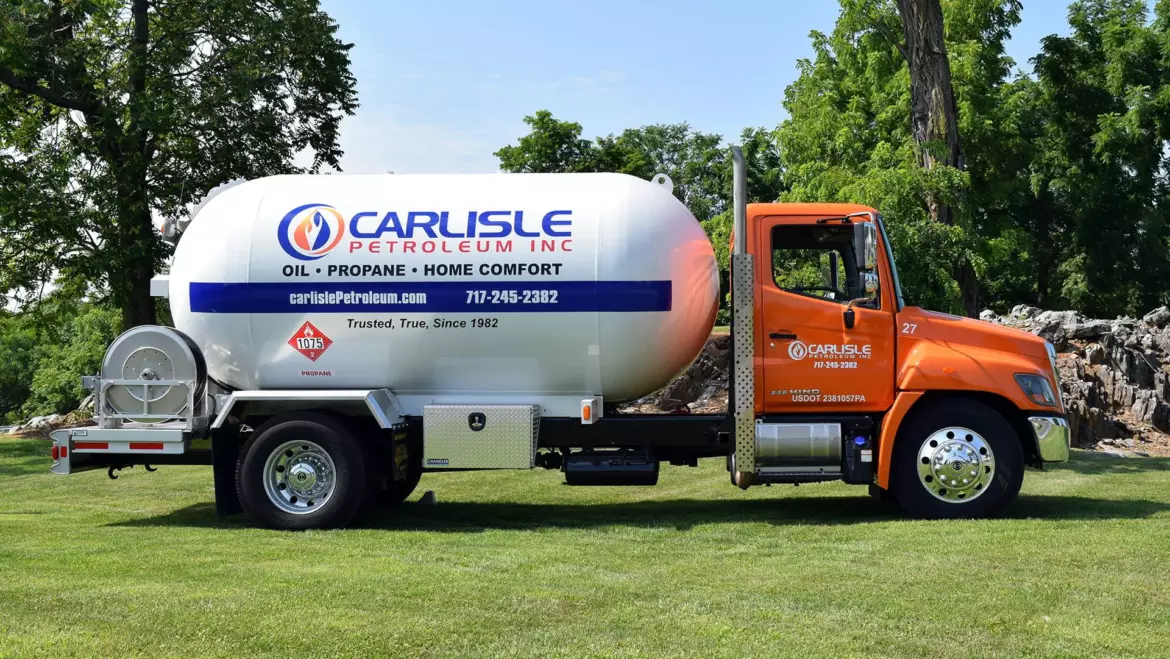PROPANE: ENERGY FOR OUR PAST, PRESENT, AND FUTURE
Propane, an important part of America’s energy mix for more than a century, is a byproduct of natural gas processing and oil refining. What makes propane popular with users, however, is what separates it from conventional fuels like gasoline and diesel.
Clean
Propane is an approved clean fuel listed in the 1990 Clean Air Act. Substituting propane for other fuels such as gasoline and fuel oil is an economical and viable step toward cleaner air. Using propane reduces the greenhouse gas carbon dioxide and air pollutants like carbon monoxide and nitrogen oxide.[1]
Learn about the U.S. manufacturers creating low-emissions propane technology
American
Propane production keeps quality jobs in our country. As of 2012, more than 145,000 workers across the U.S. are employed in propane trade, wholesale, and sales.[2]
Hear testimonials from real-life propane users in a variety of markets
Abundant
America produces more than enough propane to meet demand. In fact, the U.S. is propane’s leading producer. Propane is an abundant bridge fuel, making it a clean-burning alternative to gasoline and diesel that can address energy challenges while long-term renewable technologies are developed.[3]
Affordable
Despite sharp declines in oil prices, domestic propane production is expected to continue to grow rapidly, keeping downward pressure on average propane prices relative to oil prices.[4]
- FREQUENTLY ASKED QUESTIONS
PDF Download » Propane: Energy for Our Past, Present, and Future
What is Propane?
Propane — sometimes known as liquefied petroleum gas, or LPG — is a gas normally compressed and stored as a liquid. It is nontoxic, colorless, and virtually odorless; an identifying odor is added so it can be detected. When used as vehicle fuel, propane is known as propane autogas. Propane is most commonly used for space and water heating, for cooking, and as fuel for engine applications such as forklifts, mowers, generators, and irrigation engines. However, its applications are rapidly growing due to new technology developments.
Where Does Propane Come From?
Propane is primarily a byproduct of domestic natural gas processing, though some propane is produced from crude oil refinement. U.S. propane supplies are becoming increasingly abundant due in large part to increased supplies of natural gas.
-
- As shale gas extraction has increased, the production of propane from crude oil refinement has dropped dramatically. In 2011, 69 percent of the total U.S. supply of propane came from natural gas liquids produced in the U.S. and Canada.[5]
- Strong growth in propane supply is expected to come from the Marcellus shale play in the northeastern U.S. Industry observers estimate the Marcellus shale alone can supply more than 2 billion gallons of propane per year.[6]
- Because of the drastic increase in U.S. sources of propane, the U.S. produces more than enough propane to meet current demand and became a net exporter of propane in 2011.[5]
Who Uses Propane?
Additionally, many industries increasingly choose propane to cost effectively fuel vehicles and equipment while lowering emissions.
Propane is used in 48 million households as well as many businesses for water and space heating, indoor and outdoor cooking, clothes drying, and backup power.[7]
Professional Landscape Equipment
Propane-powered commercial lawn mowers are available today from industry-leading brands, including walk-behind, stand-on, and zero-turn-rider options. Some landscape contractors choose to convert existing equipment to propane using EPA- and CARB-certified conversion kits.
Propane isn’t limited to the field. It influences all aspects of farming operations. More than 800 million gallons of propane were sold for agricultural use in 2012.[2] This includes propane that is used to run pumps and engines, heat buildings, and dry and process crops.
Propane autogas is an approved clean alternative fuel under the Clean Air Act of 1990 and was used to power more than 23 million vehicles worldwide in 2012. Propane is commonly used to fuel buses, light- and medium-duty trucks, vans, shuttles, taxicabs, and police and government vehicles.
Propane has become the fuel of choice for many industrial uses due to its reduced emissions and operational advantages.
How is Propane Distributed?
With over 301,000 miles of transmission pipelines as of 2014, propane is widely available and easily portable.[9]As of 2012, there are more 8,500 propane retail stations nationwide.[10]
How Does the Propane Industry Contribute to the Economy?
The propane industry generated nearly $40 billion in U.S. GDP in 2012.[11]
- Department of Energy, Energy Information Administration, “Propane Explained: Use of Propane,” July 2009.
- ICF International, Impact of the U.S. Consumer Propane Industry on U.S. and State Economies in 2012, (Washington, D.C.: ICF International, 2014), prepared for the Propane Education & Research Council.
- John D. Podesta and Timothy E. Worth, “Natural Gas: A Bridge Fuel for the 21st Century” (Center for American Progress and Energy Future Coalition, August 10, 2009), http://www.americanprogress.org/issues/2009/08/pdf/naturalgasmemo.pdf (accessed March 11, 2015).
- ICF International, 2016 Propane Market Outlook, (Washington, D.C.: ICF International, 2016), prepared for the Propane Education & Research Council, http://www.afdc.energy.gov/uploads/publication/2016_propane_market_outlook.pdf.
- ICF International, Propane Supply Sources and Trends, (Washington, D.C.: ICF International, August 2012), prepared for the National Propane Gas Association.
- ICF International, 2012 Propane Market Outlook, (Washington, D.C.: ICF International, 2010), prepared for the Propane Education & Research Council.
- Department of Energy, Energy Information Administration (EIA), Table HC1.1 Fuels Used and End Uses in U.S. Homes, by Housing Unit Type, 2009, http://www.eia.gov/consumption/residential/data/2009(accessed July 14, 2014).
- Air Pollution Control Act, Public Law 84-159, U.S. Statues at Large 69 (1955): 322, as amended, codified at U.S. Code 42, 7401-7626 (commonly known as the Clean Air Act), http://epw.senate.gov/envlaws/cleanair.pdf.
- Bureau of Transportation Statistics, Table 1-10: U.S. Oil and Gas Pipeline Mileage, http://www.rita.dot.gov/bts/sites/rita.dot.gov.bts/files/publications/national_transportation_statistics/html/table_01_10.html, (Accessed May 23, 2016).
- Department of Energy, Office of Energy Efficiency and Renewable Energy, Alternative Fuels Data Center, Alternative Fueling Station Counts by State, http://www.afdc.energy.gov/fuels/stations_counts.html, (Accessed May 18, 2016).
- ICF International, Impact of Consumer Propane Industry on U.S. and State Economies In 2012: Final Report, (November 2014), prepared for the Propane Education & Research Council, https://www.npga.org/files/public/ICF_Propane_Industry_Impact_Study.pdf.
Source: Propane Clean American Energy

